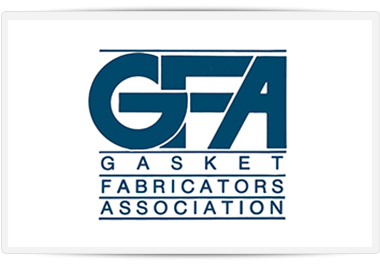When it comes to how gaskets are made, several processes and fabrication techniques can be used. How do you know which manufacturing process is best for your gasket? The experts at Frank Lowe can help.
We'll first help you select the best gasket material based on the environment and unique demands of the application. Then we'll use the best, most cost-efficient custom manufacturing process to create your gaskets. Continue reading to learn how gaskets are made through the most common fabrication techniques.
How Are Gaskets Fabricated with Rotary Die Cutting Machines?
With a rotary die cutting machine, custom-designed cylindrical dies are attached to a rotary press that converts non-metallic material into gaskets. The material is fed into the rotary die cutting station that houses a hard anvil cylinder and a rotary cutting die cylinder. The anvil and cutting cylinder move in opposite directions along their horizontal axes.
The rotary cutting die is the part that does the actual cutting; while the anvil cylinder acts as a surface against the cutting die. As the nonmetallic material is fed through the station between the anvil cylinder and the rotating die cylinder, the cutting edge of the die slices through the elastomer to create precise gaskets.
How Are Kiss Cut Gaskets Made?
The rotary die cutting machine is often used to create kiss cut gaskets. Kiss cutting explains when the elastomer and gaskets are fully cut through, but the backing paper is left in tact. With kiss cutting, the rotary die gently "kisses" the backing paper without cutting through it.
How Are Industrial Gaskets Made on Press Die Cutting Machines?
One of the most popular ways to make different types of industrial gaskets is with press die cutting machines. This equipment ranges from industrial-sized press die cutting machines to more compact, personal models. As the name suggests, gaskets made on press types of die cutting machines are formed from a die being lowered and raised on the elastomer to create the desired gasket shape.
The cutting action of the die can be managed by manual sources, hydraulic sources, pressurized sources, or electric sources. Depending on the needs and application, the die can be used to cut several gaskets at one time from stacked elastomers.
How Are Gaskets Fabricated with Flatbed Die Cutting Machines?
With flatbed die cutting, gaskets are stamped out through the use of hydraulic presses and steel rule dies. Flatbed die presses are offered as electric models, mechanical models, and hydraulic models. This type of die cutting machine uses a flat fixed base and a movable head. The cutting die is generally made from sharper strips of metal called a steel rule, which is bent in a manner that conforms to the gasket being produced.
Over a brief period of time, hydraulic pressure continues to build in a cylinder that forces the cutting die through the material to create the desired gasket. Flatbed die cutting machines can be used to create kiss cuts, similar to rotary die cutting machines.
At the same time, the use of a steel die on the flatbed makes it more suitable for short run orders where creating rotary die is too expensive. Lastly, if the elastomer is only available in sheets, a flatbed die cutting machine may be the only solution.
How Are Gaskets Manufactured with Knifeless Die Cutting?
If you're looking for a quick run, Knifeless Die Cutting may be the best solution. To make a gasket with Knifeless Die Cutting, a blade is shot through the desired material to cut the shape of the gasket. The specifications of the gasket are generated through computer aided design, and the computer actually guides the blade throughout the process.
Knifeless Die Cutting allows hard or soft, cellular or solid elastomers to be cut in an endless array of shapes. This method of creating gaskets is quick and doesn't deform the material, which is sometimes a problem with other fabrication methods.
Contact Frank Lowe for Custom Industrial Gaskets
When it comes to creating the best gaskets for your application, Frank Lowe is second to none! We infuse more than 65 years of experience into each and every die cut. Best of all, we offer comprehensive design assistance to help you feel confident you've created the most suitable gasket for the application.
Contact Frank Lowe today!






